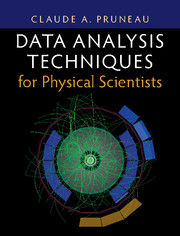Book contents
- Frontmatter
- Dedication
- Contents
- Preface
- How to Read This Book
- 1 The Scientific Method
- Part I Foundation in Probability and Statistics
- 2 Probability
- 3 Probability Models
- 4 Classical Inference I: Estimators
- 5 Classical Inference II: Optimization
- 6 Classical Inference III: Confidence Intervals and Statistical Tests
- 7 Bayesian Inference
- Part II Measurement Techniques
- Part III Simulation Techniques
- References
- Index
2 - Probability
from Part I - Foundation in Probability and Statistics
Published online by Cambridge University Press: 24 October 2017
- Frontmatter
- Dedication
- Contents
- Preface
- How to Read This Book
- 1 The Scientific Method
- Part I Foundation in Probability and Statistics
- 2 Probability
- 3 Probability Models
- 4 Classical Inference I: Estimators
- 5 Classical Inference II: Optimization
- 6 Classical Inference III: Confidence Intervals and Statistical Tests
- 7 Bayesian Inference
- Part II Measurement Techniques
- Part III Simulation Techniques
- References
- Index
Summary
Modeling Measurements: A Need for Probability
Gambling aficionados are accustomed to the notion that when they roll a pair of dice repeatedly, they obtain, each time, very different number combinations, and unless the dice have been heavily tampered with, it is impossible to control or predict which faces will roll up. The same may be said of the balls in a lottery machine: it is not possible to actually predict which balls will be drawn. This seems rather obvious. Is it not? Well, actually no! The classical mechanics that govern these processes is wholly deterministic. Given enough information about the initial kinematic conditions of a roll as well as the properties of the dice and the table they are rolled on, it should be possible to calculate, at least in principle, which face the dice will actually land on. This is perhaps less obvious, but it is true. Phenomena such as a roll of dice or the breakdown of a window by an impact are ruled by deterministic laws of physics and should thus be predictable. The problem, of course, is that they are immensely complicated phenomena involving a large succession of events. For instance, a proper calculation of the trajectory of a set of dice would require knowledge of their exact speed and orientation when they leave the player's hand. One would also need to account for friction, the air pressure and temperature, the exact elasticity of the dice and all components of the table on which they roll, etc. And because dice can bounce several times against each other and on the table, one should have to follow their complete trajectory, accounting for whatever imperfections the dice or the table might feature. This is a rather formidable task that is unlikely to ever be accomplished, even with modern supercomputers. Effectively, if dice are thrown with enough vigor, they should bounce and roll so many times as to make the calculation practically impossible. For all intents and purposes, the roll of fair dice is truly a random phenomenon: its outcome is unpredictable and all faces have an equal probability of rolling up.
- Type
- Chapter
- Information
- Data Analysis Techniques for Physical Scientists , pp. 17 - 87Publisher: Cambridge University PressPrint publication year: 2017



